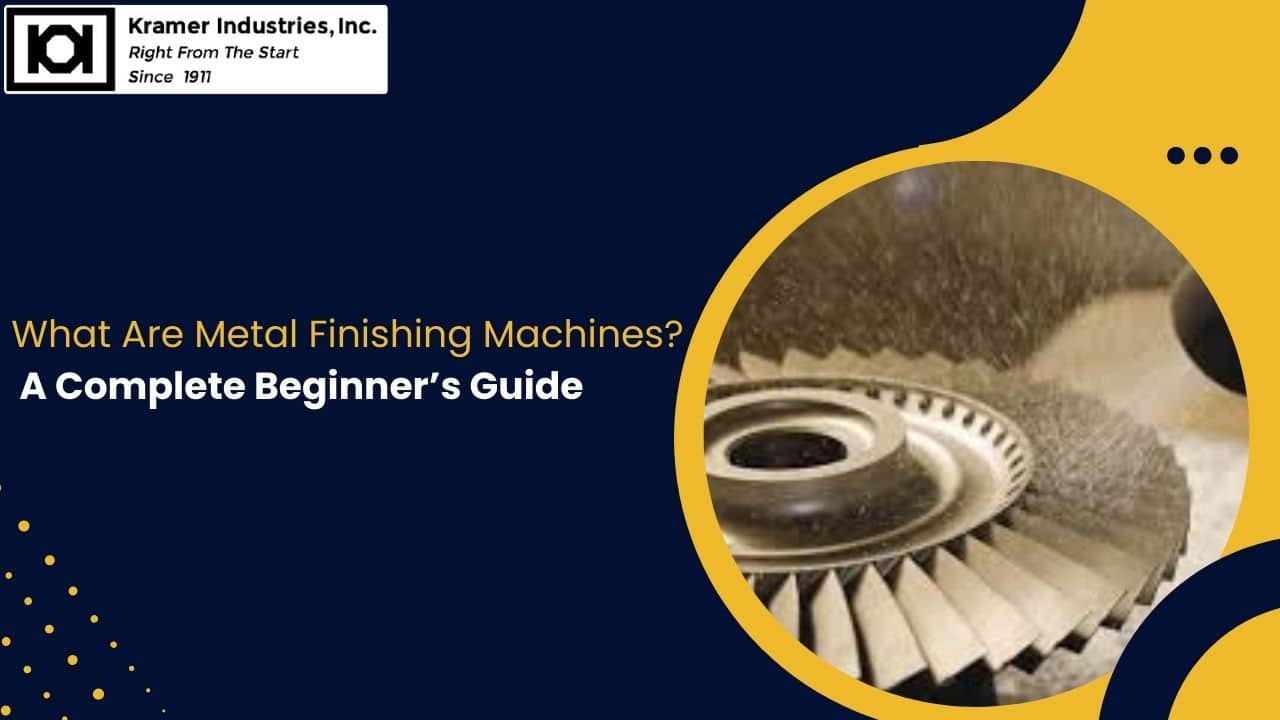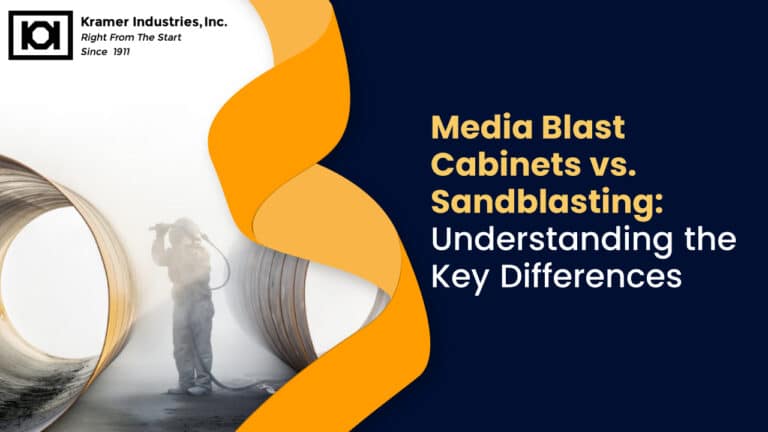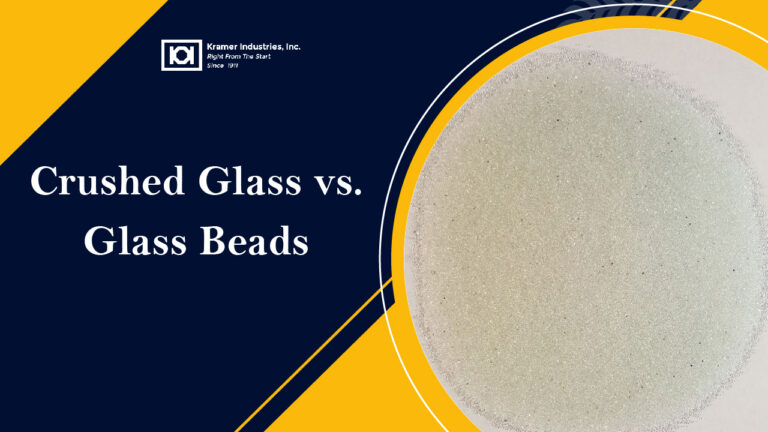Do metal finishing machines sound like the name of something technical, deeply industrial, and maybe intimidating? You wouldn’t be wrong—but you wouldn’t be entirely right either.
This guide exists to remove the mystery surrounding metal finishing machines. This beginner’s journey will show you what these machines really are, how they function, why they matter, and how to choose one to get the best results.
What Are Metal Finishing Machines?
Metal finishing machines are designed to perfect imperfection. They remove the undesirable leftovers of manufacturing, those jagged burrs, spattered slags, and warped edges that no decent part should leave the shop with.
Metal finishing machines are the last line of defense against flaws that would otherwise render components ungainly, unsafe, or unusable. Their job is to handle the aesthetic as well as functional. They polish and round the rough edges. The raw, gritty metal is transformed into something smooth and uncontaminated so that it is ready for paint, plating, welding, or final inspection.
Burrs: The Unwanted Remnants on Parts
Burrs are tiny, unwanted remnants of mechanical operations like cutting, folding, stamping, and shearing. There are two main species of burrs:
- Mechanical burrs, born of cold processes like punching, stamping, and shearing.
- Thermal burrs, also called slag or dross, caused by high-temperature cutting like laser or plasma.
Metal finishing machines specialize in removing these burrs, ensuring that no jagged edge or unwanted spike remains behind on the parts.
Deburring vs. Finishing
The terms “deburring” and “finishing” are often bundled together. But don’t be fooled—they do distinct things.
Deburring removes the obvious errors such as raised edges and leftover material. It is precise and focused, and needs to be done.
Finishing, on the other hand, is more aesthetic in nature. It smooths, refines, and enhances the surface for any future treatments, such as powder coating, welding, or anodizing.
Metal finishing machines can handle both operations—some specialize in just one, others multitask and manage both.
Types of Metal Finishing Machine Operations
Let’s take a stroll through the most common services metal finishing machines offer:
- Edge Rounding: Not just breaking edges, but forming a consistent radius that’s gentle on hands, wires, and future welds.
- Slag Grinding: Thermal burrs are ground away with robust belts and brushes.
- Calibrating and Stock Removal: Aggressive, calculated material removal to achieve tight tolerances and uniform thickness.
- Polishing: When appearance is everything, polishing brings out the gleam.
- Brushing and Surface Conditioning: A subtler process to enhance grain and texture.
The Art of Setting Deburring Standards
Every shop has its own language, rules, and expectations. To remove any confusion, you need standards. Vague instructions like “clean it up a bit” do not help at all. Standards bring clarity.
- Design
Set clear expectations during the design stage. Define edge tolerances and specify whether parts should be:
- Left raw
- Slightly deburred
- Completely free of visible burrs
- Chamfered to x mm
- Rounded to a radius of y mm
- Production
This is the heart of the shop. Here’s where metal finishing machines earn their keep. Ensure your operators have:
- Calibrated machines
- Specific tooling
- Clear documentation
- Standardized methods for each task
Give them clarity, and you’ll get consistency in return.
- Inspection
You can’t control what you don’t measure. Common inspection tools include:
- Visual tests: Great for large flaws, poor for nuance.
- Fingernails and toothpicks: Surprisingly effective for tactile checks.
- Microscopes: For high-detail burr detection.
- Borescopes: For peering into hidden chambers.
- Height gauges: Good for height, not thickness.
- Metallurgical mounts: Rare, but powerful for complex assessments.
The more complex your parts, the more precise your inspections need to be.
Choosing the Right Metal Finishing Machine
Here’s what to consider:
- Part Size and Shape: Some machines specialize in small, intricate parts. Others are built to handle aircraft wings.
- Material Type: Stainless steel, aluminum, and mild steel are different materials that respond differently to abrasion and heat.
- Production Volume: High-speed systems for high-output shops. Slower, more detailed machines for when the requirement is finesse.
- Finish Quality: Mirror-smooth, lightly brushed, or somewhere in between?
- Footprint and Noise Level: Your neighbors (and operators) might appreciate more than you think.
Your metal finishing machine should match your needs—not just now, but in the future too.
What is Lesser Known
Here are a few tidbits about metal finishing machines:
- Wet vs. Dry Deburring: Wet systems reduce dust and heat, but require filtration and water handling. Dry systems are simpler but messier due to the dust.
- Automation is Your Ally: Automated metal finishing machines reduce operator fatigue and increase repeatability. They cost more but the ROI may surprise you.
- Abrasive Type: Belts, brushes, wheels, each abrasive type leaves a different finish.
And remember: the best machines are nothing without skilled operators, so train your team well.
The Final Polish Matters
Perfecting a metal part is like giving the final touches to a painting. When it is not done, you’ve got an unfinished product. However, when it is done, you’ve got something worthy of the marketplace.
Metal finishing machines have important roles to play in quality assurance, customer satisfaction, and worker safety. A properly finished part won’t cut fingers, scrape wires, or offend the eyes of a quality inspector.
At Kramer Industries, we sell machines and help you master the metal finishing process. Vibratory tumblers, centrifugal barrel finishers, and blast cabinets are the tools and the know-how to elevate your shop to the next level.
Need advice on which metal finishing machine is right for you? Reach out to the experts at Kramer Industries today and let us help you turn raw metal into remarkable results.



